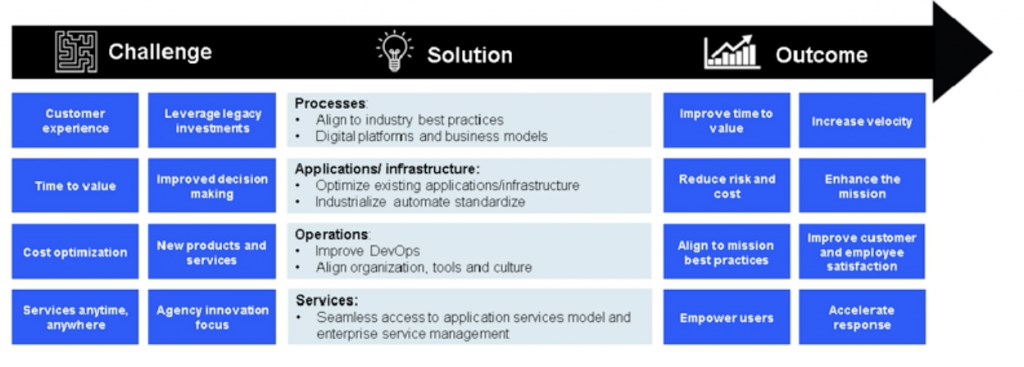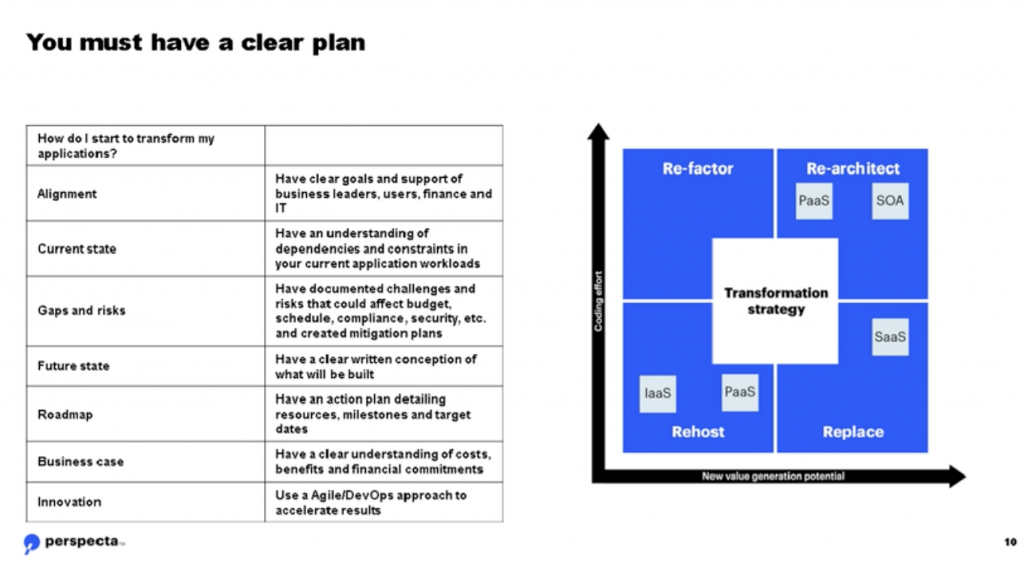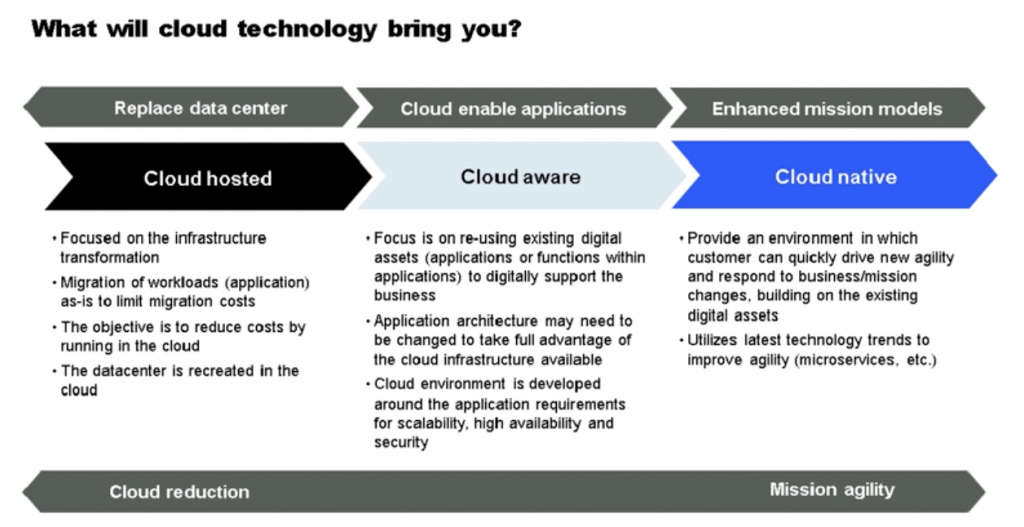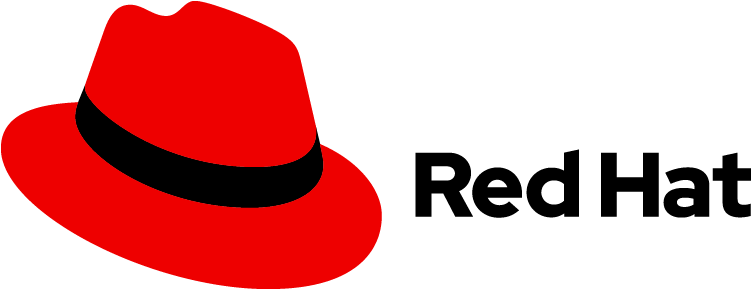When done well, a strategy can help you understand your current state, where you want to go and how to get there. Whether you’re moving furniture to a new house or critical IT resources to an offsite service provider, having a plan is vital.
At a time when many agencies are reevaluating how best to support remote employees and meet demands from constituents — all while keeping security, user experience and cost top of mind — cloud technologies are often a recurring theme in those conversations.
You may or may not be the person making the technical decisions about which cloud is best for your agency, but either way, there’s benefit in understanding how decisions are made so that you can best communicate what users need.
At GovLoop’s virtual summit Wednesday, Stu Hammer, Senior Director, Application Offerings & Advisory Services at Perspecta, walked attendees through a clear and detailed plan for decision-making around cloud services.
1. Not all applications or work that you do online today will or should go to a cloud environment. The key is knowing what challenges you face today — whether that’s cost constraints or understanding what older technologies are still in operation — what outcomes you want and how best to get there (See Figure 1).

Figure 1
2. One of the top challenges chief information officers face today is understanding what systems and software applications they’re actually working with. That includes systems built in-house by employees who have long left the agency, as well as apps that employees download without routing their requests through IT. When it comes to these systems that are no longer supported or maintained by the developer, here are questions that agencies should ask to determine the next steps. Note that non-IT professionals are critical in helping to answer these questions because they are everyday users of the systems (See Figure 2).

Figure 2
3. Answering questions about legacy technology opens the door to creating a clear plan or business case. Hammer noted that as agencies increasingly track and communicate the value of information technology investments in a more transparent and standardized way, an approach known as Technology Business Management (TBM), the use of business cases to drive tech spending is essential.
Dated models for adopting new technology will also need to change. More agencies are embracing a model called DevSecOps, which aligns development, operations and security teams more closely. If you’ve ever lamented the time it takes to add new features to software or fix bugs, then DevSecOps is a methodology you want your agency to embrace.
Referencing the chart below (See Figure 3), Hammer noted that alignment is one of the most critical decisions agencies have to make, meaning there must be clear goals for supporting employees across departments.

Figure 3
4. Getting clear on a cloud strategy means understanding what value the technology actually brings to your agency. “You have to proceed cautiously,” Hammer said. A lot of agencies took to the cloud very quickly and saw 10x increases over traditional data center costs. “Understanding the impact is important,” he said. Hammer highlighted three common options that agencies can choose from: moving applications in their current state to a cloud environment, retooling applications or the cloud environment to ensure they’re getting optimal functionality, or building services specifically for the cloud (See Figure 4).

Figure 4
Rolling out a cloud system isn’t something you jump into without thought, Hammer said. “It’s important to assess strategy.”
Check out other recaps from today’s virtual summit here, and make sure to register for other upcoming GovLoop online trainings.
This online training was brought to you by:






Leave a Reply
You must be logged in to post a comment.